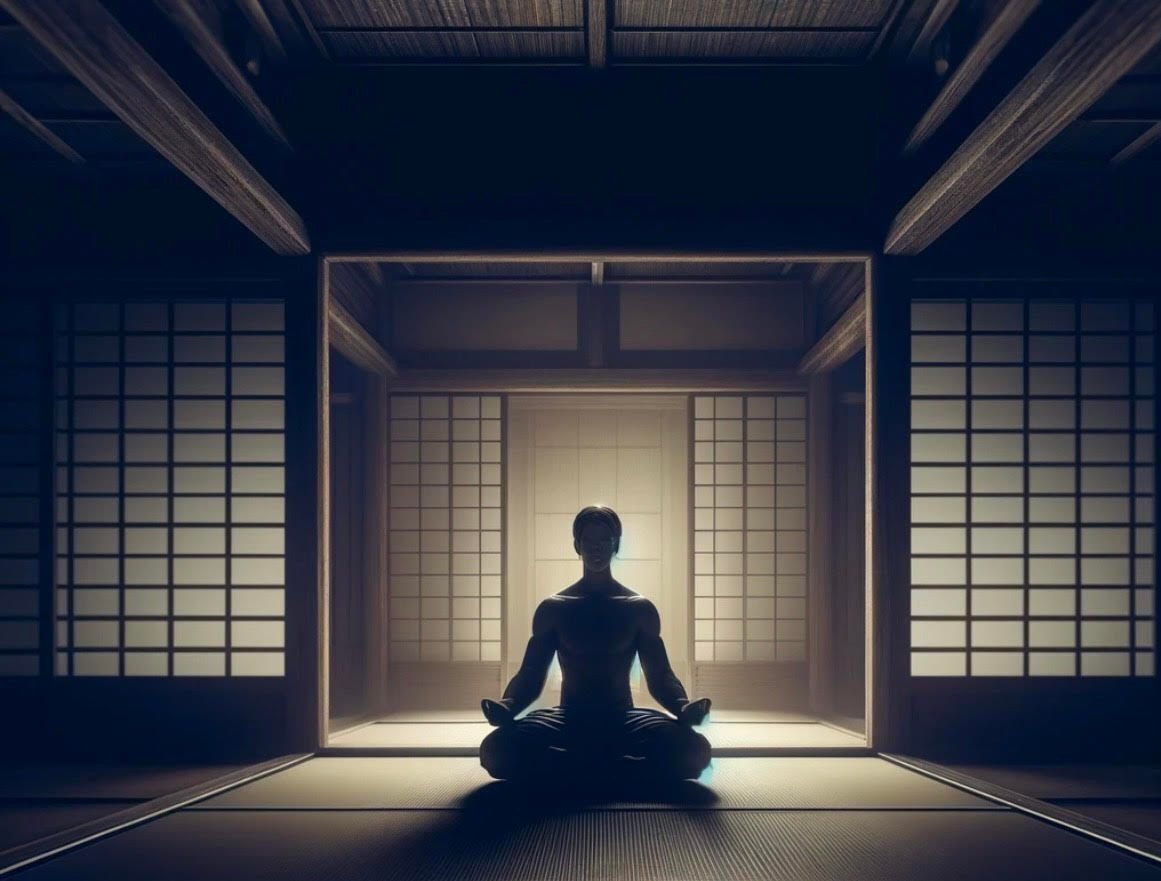
「道場に座る 吉福伸逸のセラピー ハードなアプローチは有害か?その5」
カウンセリングセッションの中で、想定外のことは起こります。クライアントのトラウマが突然蘇り、アクティングアウトを起こすなどというのもその一つです。前回お話ししたように、どんなに注意していてもアクティングアウトは起きてしまうことがあるのです。
セッション中に起こる例としては例えば、以下のようなものがあります。
突然の感情的な爆発:
クライアントがセッション中に突然激しい怒りや悲しみの感情を爆発させ、大声で泣いたり叫んだりすることがあります。激しい身体反応:
クライアントが過呼吸を起こしたり、震え出したりするなど、激しい身体反応が起こることがあります。セラピストへの攻撃的な行動:
クライアントがセラピストに対して攻撃的な言動を取ることがあります。また、セラピストが気分を害するであろう言葉を投げかけて、セラピストを挑発することもあります。セッションの突然の中断:
クライアントがセッション中に突然立ち上がって部屋を出て行く、あるいは、「カウンセリングなんて無駄だ!」などと言って、セッションを終わらせようとすることもあります。過度の沈黙:
クライアントが突然話をやめ、長い沈黙を保つこともアクティングアウトの一形態です。50分のセッション中、ずっと沈黙していた例もありました。
このような想定外の事態が起こっても、セラピストは、静かに落ち着いてそこにいる必要があります。そうでないと、アクティングアウトがエスカレートしていき収拾がつかなくなり、結局クライアントさんが、より傷ついてしまうことにもなりかねないからです。
なにがあっても落ち着いてそこにじっと座っているという心境を、吉福さんは、「道場に座る」という言葉で表現しています。丸腰で道場に静かに座っている心境とのことです。それだけでは、わからないので、重ねて吉福さんに尋ねると、吉福さんはいきなり道場やぶりの話を始めます。
道場やぶりが、試合を申し込むと大抵一室に通され待たされます。道場側としては、道場やぶりを断ると評判に関わってしまうから断ることはできないのです。しかし、負けるわけにもいかない。そのため、道場やぶりを一室に待たせ、暗くなったら、後ろから木刀で殴り殺すということを考えるわけです。
道場やぶりは、道場側のそんな魂胆を知りながら、じっと落ち着いて座って待つのだそうです。その時の道場やぶりの心境が「道場に座る」だと吉福さんは言うのです。
わかったような、わからないような説明です。
とりあえず、呼吸を落ち着けてそこにいるということだなと、考えましたが、果たして実際にそんなことができるのかどうか・・・。
それからしばらくして、私はある体験をしました。
ある組織で匿名の電話相談を受けていたときのことです。
その日、Bさんという男性から電話がかかってきました。Bさんは、うつ病と診断されていた人で、それまで2度電話セッションをしたことがありました。
Bさんは開口一番「今までありがとうございました。もうだめです。決心しました」と言うのです。
どういう状況なのかお聞きすると、ロープを首に巻いて電話しているとのことです。
正直私は動揺しました。「まずい!どうしよう!」が最初に浮かんだ言葉です。
でも、電話です。私の動揺はクライアントさんには伝わらなかったのかもしれません。
私は、ひと呼吸おいて、Bさんに今どこにいるのかをお聞きしました。とにかく自宅にいるのか外にいるのかを聞きたかったのです。自宅であれば、なんとかなるかもしれません。その時私は、道場に座るとは程遠い緊張状態だったと思います。
でも、その後のBさんの言葉で私は救われました。
クライアントさんは、私の問いかけに対し
「今、リビングにいます」
と、答えてくれました。
それまでの2回のセッションで、Bさんがとても真面目な人だと言うことを私は知っていました。自宅か外か聞いているのに、正確に「リビング」と答えるところが、いかにもBさんらしかったのです。
「Bさんらしいな」と言う感覚が、私を落ち着かせました。私は、自分の足の裏の感覚(足が地面についていると言う感覚)に注意を向け、ゆっくり呼吸しながらBさんと会話を続けました。
Bさんは、リビングの椅子の上に立って電話してきてくれたのです。その状態で、私とBさんは会話を続けました。Bさんはそれまでの人生、そして家族の話になりました。奥さんと娘の話になりましたが、それでもBさんの決意は変わりませんでした。
でも、Bさんは私に電話をかけてきてくれたのです。どこかで生きたい、生きるヒントを見つけたいと言う気持ちがあったに違いありません。私は、Bさんのその気持ちに賭けて、会話を続けるしかありませんでした。
そうしているうちに突然、Bさんの声色が変わりました。Bさんは娘さんのピンク色の財布を思い出したのです。それは、初めて持った財布で、娘さんがとても喜んでいたことを思い出したのです。その瞬間、Bさんは、その藩士をしながら泣きはじめたのです。それから程なく、Bさんは「娘を思い出したら、死ねなくなりました」と言ってくれました。
私は、Bさんに、「降りる時には、ロープを外してくださいね」と言い、Bさんは小さく笑って「はい」と言って降りてくれました。電話を受けてから1時間半後のことでした。
これが、私にとって、「道場に座る」という心境を垣間見た最初の体験となりました。そして、それは、クライアントのBさんの「リビングにいます」と言う言葉で偶然に引き出されたものでした。

